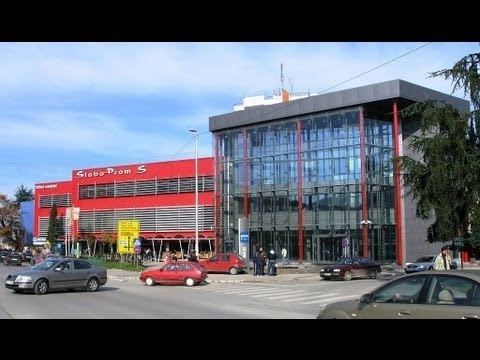Time zone CET (UTC+1) Area code(s) (+387) 49 Founded 5 March 1999 Local time Sunday 8:34 PM | Established by Final Arbitration Decision 5 March 1999 Postal code 76100 Area 448.1 km² Population 93,028 (2013) ISO 3166 code Brcko distrikt | |
 | ||
Website Official Web Site,Official District Assembly WebsiteOfficial District Prosecutor Web Site Weather 9°C, Wind SW at 8 km/h, 90% Humidity Points of interest Katolička crkva Presvijetl, Prva pošta - historijska građevina, Vijećnica - historijska građevina | ||
The Brčko District ([br̩̂t͡ʃkɔː]; Bosnian: Brčko distrikt/Брчко дистрикт) in northeastern Bosnia and Herzegovina is a self-governing administrative unit as well as condominium under the dual sovereignty of Federation of Bosnia and Herzegovina and Republika Srpska. The seat of the district is the city of Brčko.
Contents
- Map of BrC48Dko Bosnia and Herzegovina
- History
- 1961 census
- 1971 census
- 1981 census
- 1991 census
- 2013 census
- Government and politics
- Notable people
- References
Map of Br%C4%8Dko, Bosnia and Herzegovina
History
The Brčko District was established after an arbitration process undertaken by the High Representative for Bosnia and Herzegovina. According to the Dayton Peace Accords however, the process could only arbitrate the disputed portion of the Inter-Entity Boundary Line (IEBL). The Brčko District was formed of the entire territory of the former Brčko municipality, of which 48% (including Brčko city) was in the Republika Srpska, while 52% was in the Federation of Bosnia and Herzegovina. Since the end of the Bosnian War, the European Union (EU) has maintained a diplomatic peace-keeping presence in the area.
Brčko was the only element in the Dayton Peace Agreement which was not finalized. The arbitration agreement was finalized in March 1999 resulting in a "district" as mentioned above which was to be administrated by an American Principal Deputy High Representative who is also ex officio the Brčko International Supervisor.
In 2006, under the Supervisory Order, all "Entity legislation in Brčko District and the IEBL" was abolished. The ruling made by the Brčko Supervisor Susan Johnson abolishes all Entity Laws in the District, as well as abolishing the Entity Border Line. The ruling makes the Laws of the District and the Laws of the State of Bosnia and Herzegovina (including the laws of the Socialist Republic of Bosnia and Herzegovina) paramount within the District.
Following a Peace Implementation Council (PIC) meeting on 23 May 2012, it was decided to suspend, not terminate, the mandate of the Brčko International Supervisor. The Brčko Arbitral Tribunal, together with the suspended Brčko Supervision, continues to exist.
The first Brčko International Supervisor arrived in April 1997. Prior to that time, the Organization for Security and Co-operation in Europe (OSCE) had a modest office headed by Randolph Hampton. During the interim time before the District of Brčko could be represented post arbitration agreement, local elections were held, and humanitarian relief was provided with cooperation from the United States Agency for International Development (USAID) and ECHO. The District became known as a center for different state-building programs run by foreign governments, particularly the United States.
1961 census
According to 1961 census Municipality of Brčko had 62,952 inhabitants, including:
1971 census
According to 1971 census Municipality of Brčko had 74,771 inhabitants, including:
1981 census
According to 1981 census Municipality of Brčko had 82,768 inhabitants, including:
1991 census
According to 1991 census Municipality of Brčko had 87,627 inhabitants, including:
2013 census
Government and politics
There are 29 seats in the Assembly of the Brčko District. The seats are divided as follows:
